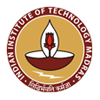Course Objectives: To identify and apply the concepts involved in the syntheses, structure and physical properties of crystalline inorganic solids
Learning Outcomes: At the end of the course, the learners should be able to:
Arrive at the chemical compositions based on unit cell contents and fractional coordinates.
Index cubic powder XRD pattern, determine unit cell parameter and lattice type
Index non-cubic powder XRD patterns based on unit cell parameters provided Calculate densities from powder XRD data Identify and apply suitable strategies for synthesizing inorganic crystalline solids in polycrystalline and single crystal forms Correlate and Predict structure-composition-properties (magnetic, electrical and optical) in inorganic crystalline solids
Course Contents:
Crystal Structure: Crystalline and amorphous solids; One and two dimensional lattices, crystal systems, Bravais lattices, point groups: α-Po, fcc, bcc and hcp metals and their packing efficiency, ionic radii ratios; structure types of ionic solids: CsCl, NaCl, ZnS, Na2O, CaF2, CdCl2, NiAs, ZnO, CdI2, Cs2O, PbO, TiO2, ReO3, perovskite ABO3, YBa2Cu3O7, K2NiF4, Ag2HgI4, spinel and olivine. Polyhedral structure description of solid state compounds. Frenkel and Schotky defects, colour centers, Crystallographic shear (CS) in WO3-x
Powder x-ray diffraction, indexing the powder XRD patterns, Systematic absences, Structure factor, determination of lattice type, unit cell parameter and density for α-Po, fcc, bcc and hcp metals, NaCl, ZnS, diamond, CuZn, CuAu, AuCu3 and other simple compounds. Neutron diffraction.
Preparative methods: Solid state reaction, chemical precursor method, co-precipitation, sol-gel, metathesis, self-propagating high temperature synthesis, ion-exchange reactions, intercalation / deintercalation reactions; hydrothermal and template synthesis; High pressure synthesis.
Methods of Single Crystal Growth: Solution growth; Melt Growth-Bridgeman, Czochralski, Kyropoulus, Verneuil; Chemical Vapour Transport; Fused Salt Electrolysis; Hydrothermal method; Flux Growth.
Electrical properties: Band theory of solids -metals and their properties; semiconductors – extrinsic and intrinsic, Hall effect; thermoelectric effects (Thomson, Peltier and Seebeck); insulators – dielectric, ferroelectric, pyroelectric and piezoelectric properties, multiferroics.
Superconductivity: Basics, discovery and high Tc materials.
Magnetic properties: Dia, para, ferro, ferri, and antiferro magnetic types; soft and hard magnetic materials; select magnetic materials such as spinels, garnets and perovskites, hexaferrites and lanthanide-transition metal compounds; magnetoresistance.
Thermal analysis: TGA, DTA, DSC
Text Books:
R. West, Solid State Chemistry and its Applications, John Wiley & Sons, 1984. (Reprint Edition)
E. Smart and E. A. Moore, Solid State Chemistry – An Introduction, 4th Edition, CRC Press, 2012.
V. Keer, Principles of the Solid State, 2nd Edition, New Age International, 2017.
Weller, T. Overton, J. Rourke, and F. Armstrong, Inorganic Chemistry, 6th Edition, Oxford University Press, 2014. (South Asia Edition 2015)

